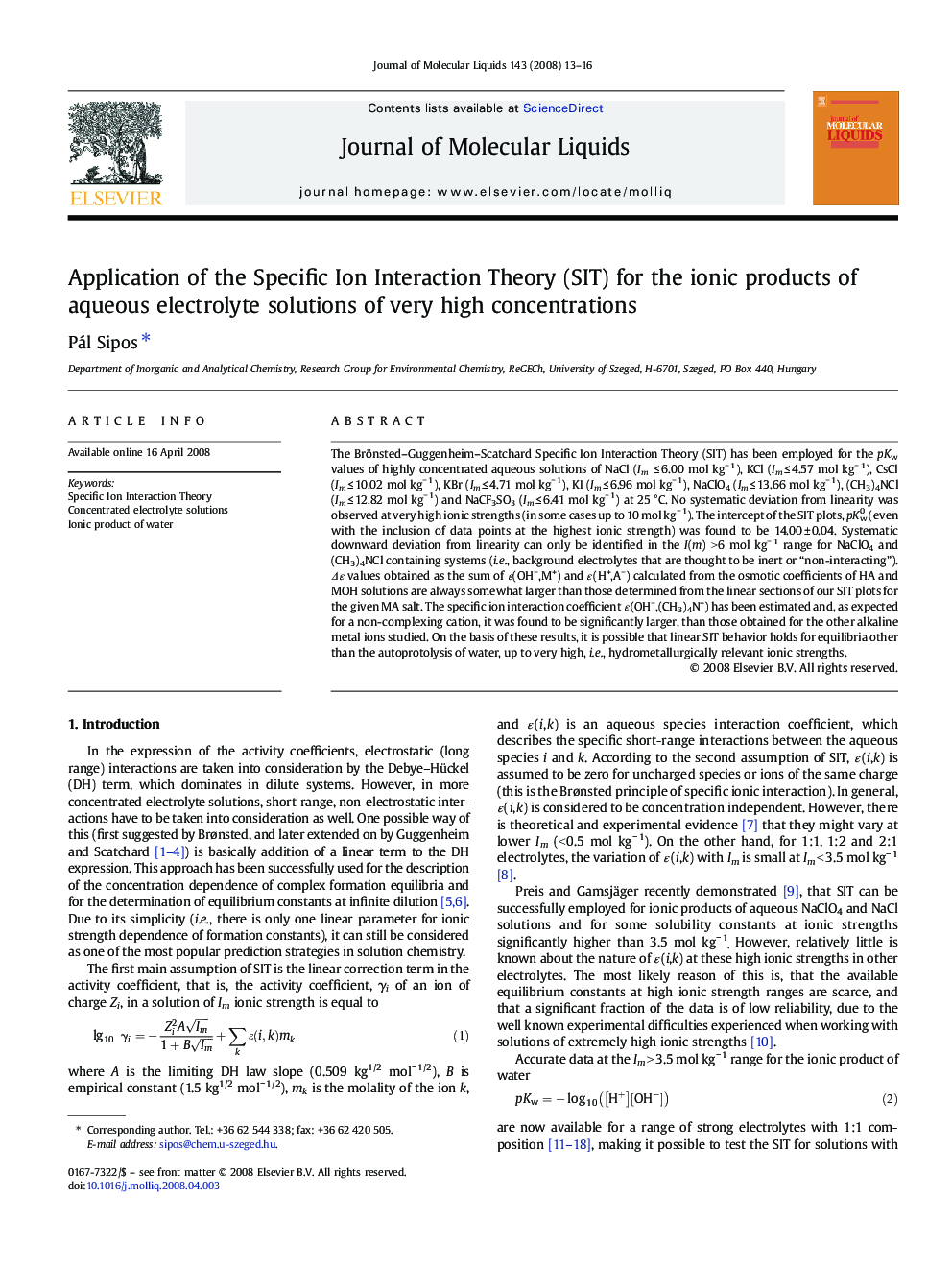| Article ID | Journal | Published Year | Pages | File Type |
|---|---|---|---|---|
| 5413295 | Journal of Molecular Liquids | 2008 | 4 Pages |
Abstract
The Brönsted-Guggenheim-Scatchard Specific Ion Interaction Theory (SIT) has been employed for the pKw values of highly concentrated aqueous solutions of NaCl (Im â¤Â 6.00 mol kgâ 1), KCl (Im â¤Â 4.57 mol kgâ 1), CsCl (Im â¤Â 10.02 mol kgâ 1), KBr (Im â¤Â 4.71 mol kgâ 1), KI (Im â¤Â 6.96 mol kgâ 1), NaClO4 (Im â¤Â 13.66 mol kgâ 1), (CH3)4NCl (Im â¤Â 12.82 mol kgâ 1) and NaCF3SO3 (Im â¤Â 6.41 mol kgâ 1) at 25 °C. No systematic deviation from linearity was observed at very high ionic strengths (in some cases up to 10 mol kgâ 1). The intercept of the SIT plots, pKw0 (even with the inclusion of data points at the highest ionic strength) was found to be 14.00 ± 0.04. Systematic downward deviation from linearity can only be identified in the I(m) > 6 mol kgâ 1 range for NaClO4 and (CH3)4NCl containing systems (i.e., background electrolytes that are thought to be inert or “non-interacting”). ÎÉ values obtained as the sum of É(OHâ,M+) and É(H+,Aâ) calculated from the osmotic coefficients of HA and MOH solutions are always somewhat larger than those determined from the linear sections of our SIT plots for the given MA salt. The specific ion interaction coefficient É(OHâ,(CH3)4N+) has been estimated and, as expected for a non-complexing cation, it was found to be significantly larger, than those obtained for the other alkaline metal ions studied. On the basis of these results, it is possible that linear SIT behavior holds for equilibria other than the autoprotolysis of water, up to very high, i.e., hydrometallurgically relevant ionic strengths.
Keywords
Related Topics
Physical Sciences and Engineering
Chemistry
Physical and Theoretical Chemistry
Authors
Pál Sipos,
